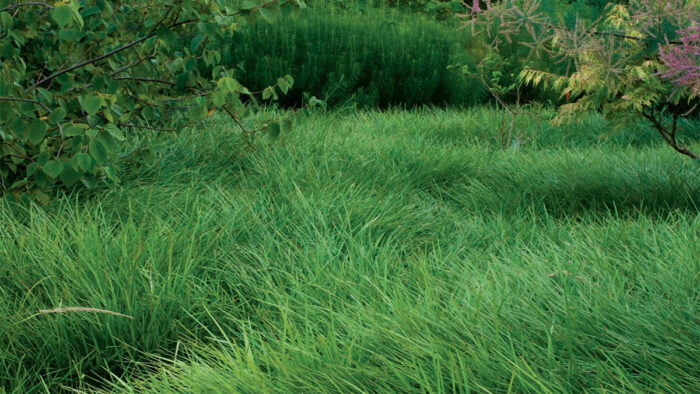
Like any traditional American gardener, I’ve paid homage to the gods of turfgrass around my house. I’ll admit that lawns provide a place to rest the eye and showcase mixed borders; they also create a sense of order and safety around the house. But turfgrass is boring—not to mention high maintenance. All the buying and schlepping of products and the constant mowing and watering is overwhelming. Maintaining my lawn required carrying a mower down some tricky stairs, and because I didn’t water my lawn, it looked brown for most of the summer. So I was actually being selfish when I dug up and composted my turfgrass. And with the grass gone, I also kissed good-bye to the mower, the fertilizer, the sprinkler, and almost all of the weeding.
If you don’t need a tough playing surface for kids and dogs, grass can be replaced with just about anything—trees, shrubs, perennials, edibles, patios, gazebos—but I chose to simply copy the look of a lawn using plants more to my liking. No mini-meadow for me—just low ground covers that require little or no care, are interesting and fun to grow, and look good all year. What I call my gorgeous “exlawn” is thriving with a mix of evergreen ground covers that enjoy sun, can handle light traffic, and will survive a heavy garden hose being lugged across them.
Mass these ground covers for a one-of-a-kind look
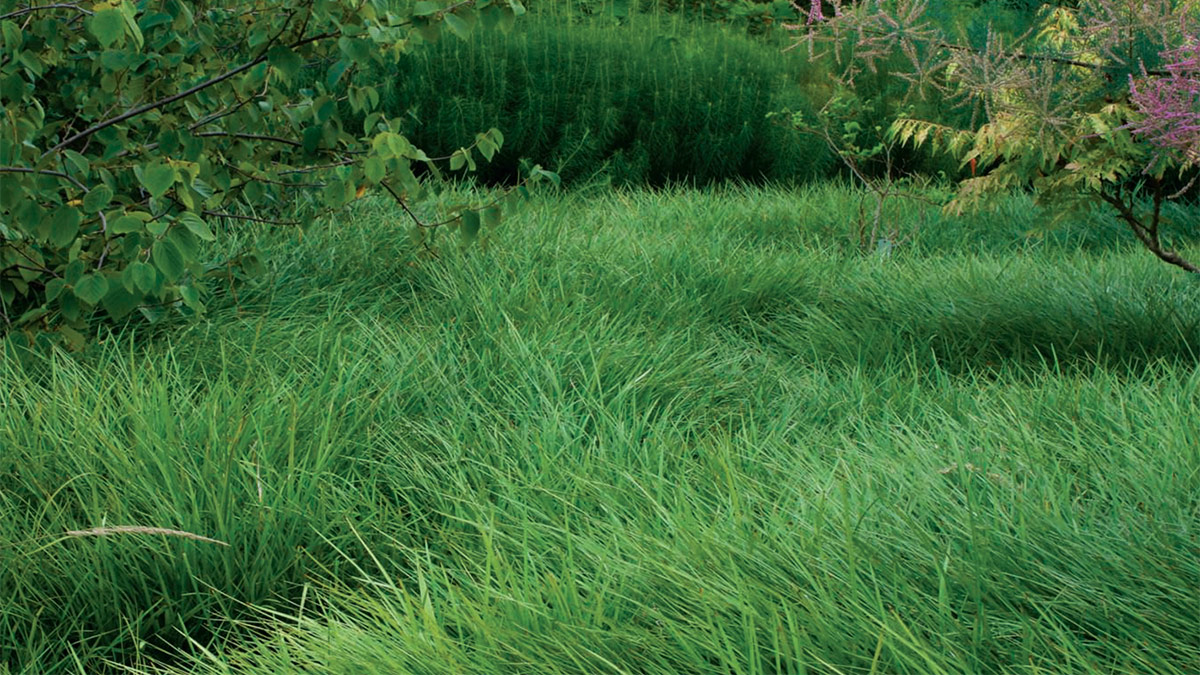
The most grasslike plant I’ve experimented with is lilyturf (Liriope spicata and cvs.). Definitely in the “thug” category, lilyturf is best planted alone and in controlled sites. I recommend it for the hellstrip between sidewalks and streets, but its vigorous runners may still reappear on the other side of the sidewalk. I would avoid planting it in areas you walk over because it has a lumpy growth habit and reaches 8 to 16 inches tall. Because lilyturf does not require mowing, you could also plant it on steep banks where erosion is a problem and mowing is difficult. In moist or dry soil and in sun or shade, this plant thrives (but spreads less aggressively in full shade). Because it fills in fast, this type of liriope will cover large spaces at little or no cost. In my town, neighbors are always willing to share their extras.
A well-behaved cousin (Liriope muscari and cvs., USDA Hardiness Zones 6–10) is a much better choice where spreading would be a problem. It has the same carefree qualities as lilyturf, including the optional care of late-winter clipping or mowing to remove ratty foliage.
Where my oval-shaped, 20-foot-long by 11-foot-wide front lawn once grew, I planted a few varieties of thyme (Thymus spp. and cvs.) for their fragrance and drought tolerance. Slow spreading and at a cost of $3 to $6 per plant, they’re not an inexpensive option. You can expect each plant to spread about 6 inches per year, so filling a large space takes a hefty budget or a lot of patience. I learned the hard way that plopping thyme into regular garden soil just won’t do. It needs a good 6-inch depth of fast-draining soil for optimal growth.
If you are growing thyme, expect to weed aggressively the first year. During the second year, it will begin to outcompete new weed seeds, and by the third or fourth season, it will reach full coverage. To speed up the process, divide larger clumps to fill in any gaps. Once filled in, thyme is close to trouble-free. It doesn’t require mowing or fertilizing and only needs water in drought conditions. It can handle moderate foot traffic (being walked on once or twice a day), and it releases a lovely fragrance as you stroll over it. I grow ‘Bressingham’ creeping thyme (T. doerfleri ‘Bressingham’, Zones 6–9) and white creeping thyme (T. serphyllum ‘Albus’, Zones 4–9); both are under 2 inches tall.
An option for shady sites with some daily foot traffic is mazus (Mazus reptans and cvs.), which spreads by creeping stems that root as they creep along. At 2 inches tall, it appears almost flat against the soil. It prefers moist soil, so provide some irrigation in dry climates. When established, it’s a dense green carpet that outcompetes weeds and sports attractive lavender blooms in spring through summer. It is noted for fall color in some climates and is evergreen in warm areas.
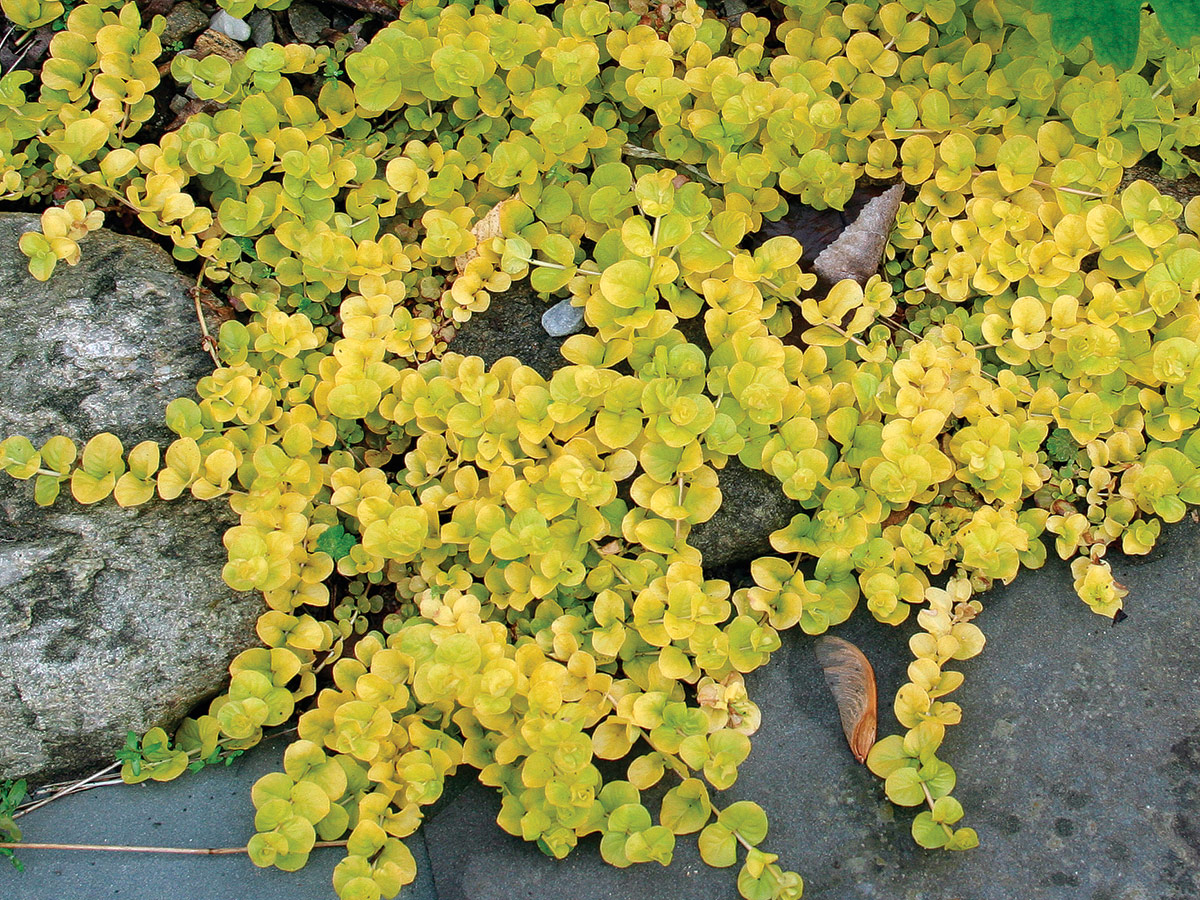
Golden creeping Jenny (Lysimachia nummularia ‘Aurea’) is a known thug. It doesn’t play well with its neighbors but is perfect for replacing lawns as it can be kept within bounds simply by edging. The plant is less than 3 inches tall with an aggressive spread. Its eye-popping chartreuse leaves turn an attractive red in winter, then green up again in early spring. It tolerates full sun to partial shade and needs supplemental water during periods of moderate drought. It’s tough enough to handle occasional foot traffic.
Mix these low growers for a creative alternative to turf
If a single species massed together is not exciting enough for you, create your own growing mosaic by combining a few species together.
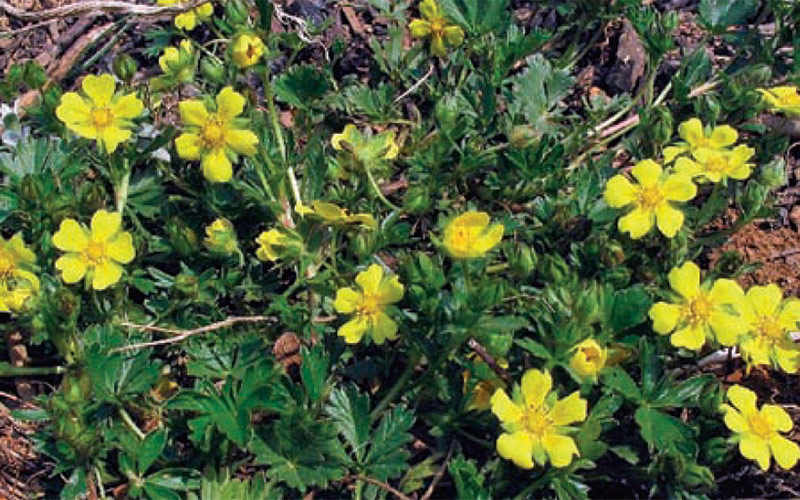
Vigorous enough to be combined with golden creeping Jenny is dwarf cinquefoil (Potentilla neumanniana ‘Nana’); together, they form a lovely mosaic in chartreuse and light green. From April to June, dwarf cinquefoil has small, buttery gold flowers, which hover over delicate strawberry-like leaves that reach 3 to 4 inches tall with about a 1-foot spread. Plant it in well-drained soil in full sun to partial shade and then leave it alone; it’s tough as nails but doesn’t tolerate being transplanted. Dwarf cinquefoil can take more foot traffic than the other lawn alternatives I’ve planted, but it still can’t handle any soccer games.
In my 1,000-square-foot backyard, I planted golden carpet sedum (Sedum acre, Zones 3–8), a creeping variety that is only 4 inches tall. Because I already had this succulent growing along my dry streambed, I simply lifted chunks of it and planted them a foot apart across the expanse that was once lawn; within two months, they completely filled in without costing me a cent. It’s drought tolerant and never needs fertilizing—or really any care at all. By the second year, the sedum was thick enough to completely outcompete weeds. Golden carpet sedum has bright yellow blooms in late spring, which are covered by pollinators. Its undulating habit is lovely, and despite a short root system, it retains the soil on the hillside in my back garden. Although it is slower growing, creeping red sedum (Sedum spurium and cvs., Zones 4–9) sports multicolored leaves and makes an interesting combination with golden carpet sedum. Both varieties handle light foot traffic.
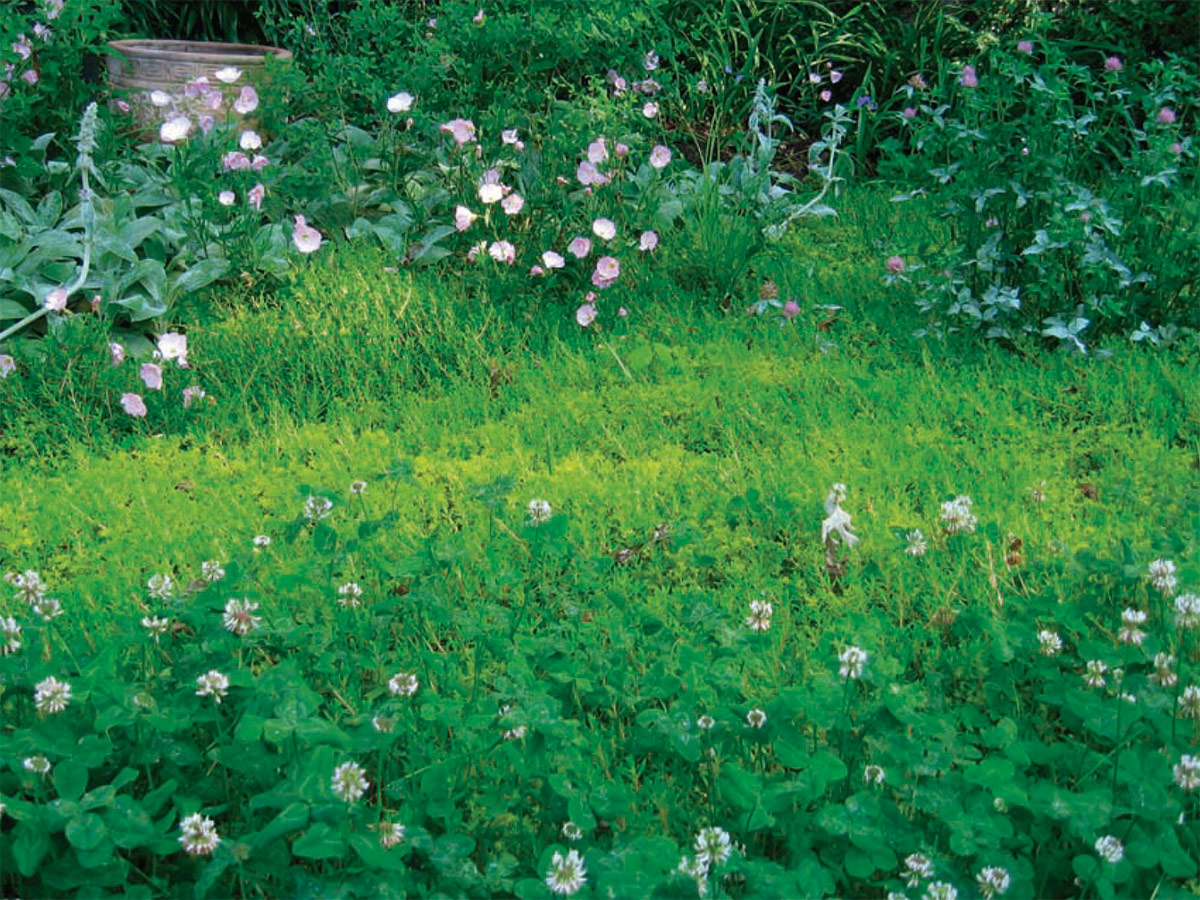
For a nice companion to creeping sedums, I tried Dutch white clover (Trifolium repens, Zones 4–8). Clovers were once added to turf mixes for their excellent nitrogen-fixing or self-fertilizing talents until the weed killer 2,4-D turned out to kill it, too; after that, advertisers simply rebranded it as a weed. It’s not a weed. It’s a self-feeding wonder plant, and compared to common turfgrasses, it tolerates more shade, poorer soils, and less water. Yet when I mixed clover with a creeping sedum, by the second season it shaded and then killed the shorter plant, so don’t do what I did! Clover is best grown alone to form a cheap, easy-care lawn (though one that’s not tough enough for sports). Clover growers can mow regularly to mimic the look of a lawn, mow once in summer to remove brown flowers and encourage rebloom, or not mow at all.
My exlawn is certainly more colorful and interesting than turfgrass could ever be and is less work—that is, less work than the perfect-looking, overwatered, overfed, and oversprayed lawn my dad was so proud of. My mix of lilyturf, thyme, mazus, creeping Jenny, dwarf cinquefoil, sedum, and clover is always evolving. I’ll be tweaking it for years to come. After all, what I love is gardening, not “yardening.”
3 Ways to Remove Grass
1. Power it up
You can slice the sod with a sod cutter, but expect to get some good exercise in the process. A gas-powered sod cutter is not as fast and easy as its makers claim, but it’s worth a try; it can be rented from most equipment-rental stores for about $45 a day. For the same cost, try a rototiller. It unearths the grass and weeds but does not remove them. The problem is that, because the grass and weeds are not removed, the seeds and roots remain and weeding soon becomes a problem.
2. Muscle it out
I used a flat-edged shovel to remove my lawn. I slid the blade under the sod roots, sliced out an area, and lifted the chunks out by hand. I removed about 30 square feet of sod per hour this way. I cold-composted the clumps of sod, which delivered the best compost ever—without my ever having to turn the pile.
3. Smother it down
The layer method (also known as “lawn lasagna”) smothers rather than removes the grass. Place eight overlapping layers of newspaper or one layer of cardboard over the area you want to remove, then cover that with about a 3-inch-deep layer of weed-free mulch or compost. Water it down, and wait. This simple decomposing process takes six months to a year. So if you have patience, this is a good option for you.
Susan Harris tends her exlawn in the Washington, D.C., area. She is a member of the Lawn Reform Coalition, and writes for GardenRant.com.
Photos, except where noted: Steve Aitken
Sources
The following plant sellers offer the widest selection of lawn alternatives mentioned in this article.
- Joy Creek Nursery, Scappoose, Oregon; 503-543-7474; joycreek.com
- Sandy Mush Herb Nursery, Leicester, North Carolina; 828-683-2014; sandymushherbs.com
- White Flower Farm Litchfield, Connecticut; 800-503-9624; whiteflowerfarm.com
Fine Gardening Recommended Products

SHOWA Atlas 370B Nitrile Palm Coating Gloves, Black, Medium (Pack of 12 Pairs)
Fine Gardening receives a commission for items purchased through links on this site, including Amazon Associates and other affiliate advertising programs.

Ho-Mi Digger - Korean Triangle Blade
Fine Gardening receives a commission for items purchased through links on this site, including Amazon Associates and other affiliate advertising programs.

Planting in a Post-Wild World: Designing Plant Communities for Resilient Landscapes
Fine Gardening receives a commission for items purchased through links on this site, including Amazon Associates and other affiliate advertising programs.




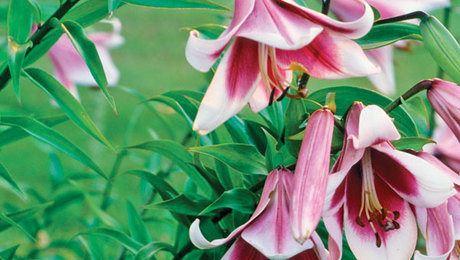
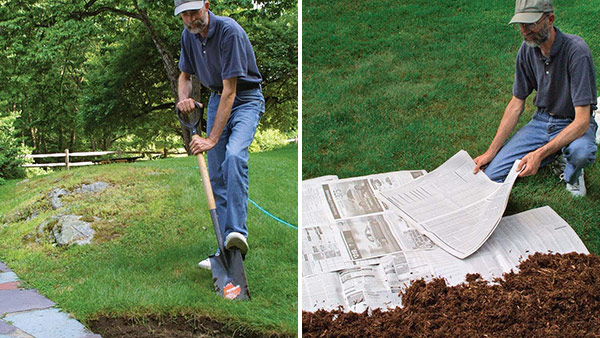
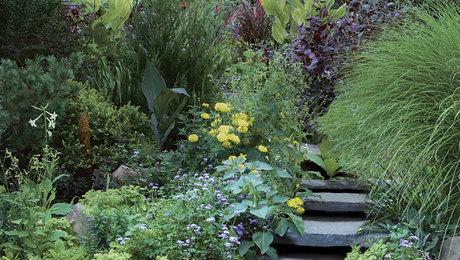













Comments
Very nice alternative to grass.
Spreading forms of liriope - yay - rats and snakes. Does not stop weeds. Mazus - Looks like weeds and doesn't control weeds. Creeping Jenny can be great in containers or controlled by concrete, but it goes over narrow edgers. Thyme needs excellent drainage and full sun and still is not very successful in humid NC. Clover has benefits as soil improver, but very informal and often looks unkempt. Low sedums are excellent for good drainage with full sun (some okay with part sun, meaning 5 hours), but not stepable. Go to garden centers in your area and ask lots of questions about what works in your area and what the site requirements are. For quickest spread, loosen and amend the soil. Water as needed at first.
Great article. I have been considering planting creeping thyme around my stepping stones, but now that I know they need a depth of 6" I'm guessing that it may not work!
I have large moist shady area to plant in with many tall trees. Is there a particular ground cover that is best here. When is the best time to plant it, in the fall or the spring?
Mosses which will probably show up there on it's own. Mint will take over for you. If you won't be walking on it you could put plants that like ponds since you said it is moist. Maybe water cress, there is a type of iris, sedges.
Good comment by Vicky, but without knowing the pH of the site and the tree species you could waste time and money. If you have black walnut, there are a limited number of plants you could grow. Most of all I would be asking why that area is bare. Do the trees want that? And if you go in and disturb the site, you could kill the trees. So, Fred, more info is needed, LOL. Where in the country are you is a good start:)
I love my creeping thyme it makes pretty flowers all summer and the bees love it. They also love the white flowers of garlic chives. If you get some shade your thyme can get powdery mildew. Remember thyme will take over your stepping stones so you will have to dig them back out every year or two. But then you have more thyme to take some where else, sell or give away. Elfin, wooly and lots of other thymes are just as pretty and grow fast. The iris moss didn't spread as well it kinda just sat there, don't know what went wrong with mine maybe too shadey til the tree spit and fell. Be careful with succulents mine took over, even in places I didn't plant it.
Lysimachia mummularia (Creeping jenny) is considered invasive in New England, particularly posing a problem in flood plains, forests and
wetlands. Please don't use it!
Log in or create an account to post a comment.
Sign up Log in